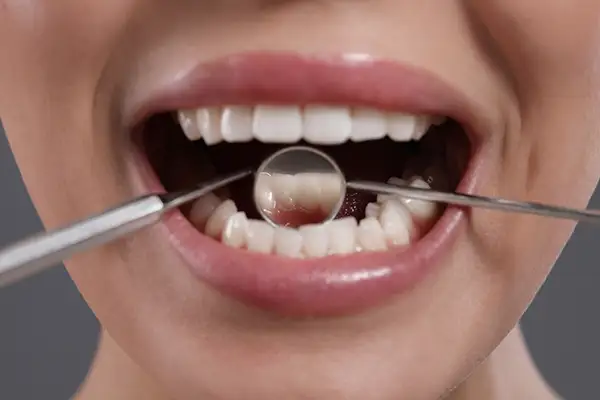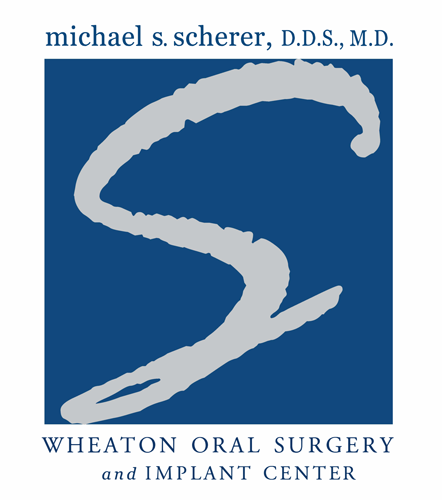Gum Disease Perhaps the most surprising thing about periodontal disease is the cause. Gum disease is caused by naturally occurring bacteria found in the mouth. When kept at safe, healthy levels, these bacteria actually help keep the mouth healthy. They break down food debris and aid indigestion. When patients regularly floss and brush their teeth, these bacteria are kept at a healthy level. Perhaps the most surprising thing about periodontal disease is the cause. Gum disease is caused by naturally occurring bacteria found in the mouth. When kept at safe, healthy levels, these bacteria actually help keep the mouth healthy. They break down food debris and aid indigestion. When patients regularly floss and brush their teeth, these bacteria are kept at a healthy level. The problems come into play when patients do not brush, and floss and the bacteria are allowed to propagate and rise to an unhealthy level and begin to damage the soft and hard tissues found in the oral cavity. When this happens, widespread decay and ultimately periodontal disease can set in and lead to tooth loss and even bone mass loss of the jawbone. The most important thing to know about the disease is there is no cure (only treatment) once it reaches the latter stages. Any patients who have had a periodontal disease diagnosis or who think they may have some of the symptoms can come into our Wheaton Oral Surgery office for an evaluation by our oral surgeon in Napperville. What Are the Causes of Periodontal Disease?While many patients might think of periodontal disease like the flu, which can be spread through contact with one person to another, it is not like that at all. The root cause of periodontal disease is simple. It is the lack of healthy oral cavity hygiene. While there are contributing factors, which might make a patient a higher risk to get periodontal disease, the root cause is poor brushing and flossing. Simply by brushing twice a day and flossing twice a day, the dangerous bacteria in the mouth can be kept at safe levels and the oral cavity safe. If not kept in check, the bacteria can irritate the gums and other soft tissues of the mouth and lead to gingivitis, which is the first level of gum disease. The gums will be tender and sore during this stage and bleed while brushing and flossing. There are a number of factors which can make a patient more likely to develop periodontal disease which include puberty, pregnancy, and menopause. All of these involve altered levels of hormones in the body which can contribute to gum disease. The use of tobacco products can also be a factor. Symptoms of Gum DiseaseThere are a variety of symptoms of gum disease, some easy to spot and others not so easy. In fact, there are some instances where the patient is unaware they have periodontal disease because all of the symptoms are occurring beneath the gumline. The outward sides are bleeding gums, sore teeth and jaw, loose teeth, or odd discolored areas of the gums. The inward signs can include bone mass loss which cannot be detected without x-rays. Dental Consequences of Periodontal DiseaseGum disease is destructive to both the hard and soft tissues of the oral cavity. If caught in the initial stage, the disease can be cured with proper treatment, however once it moves beyond this first stage, it cannot be. The disease becomes something patients have to deal with, coming in for what's known as periodontal maintenance. Periodontal maintenance is a deep cleaning procedure necessary to slow the progress of the disease. At that point only symptoms can be treated, the disease itself is incurable at this stage. Remarkably, maintaining a high degree of oral health by brushing and flossing with regularity is the best defense against periodontal disease. Even skipping one day can be detrimental and cause unrealized consequences. The bacteria in the mouth, when kept at healthy levels helps to rid the mouth of food debris and helps with digestion. When brushing and flossing does not occur regularly these bacteria grow to dangerous and destructive levels. Even by skipping one night can damage soft and hard tissues in the mouth. The Progression of Gum DiseaseWhile the initial symptoms might not be very alarming, they are only signs of things to come. At first, patients might notice their gums becoming bright red and irritated because the bacteria have started to irritate the soft tissue. When the bacteria are left in place it can become tartar which is incredibly sticky and difficult to remove with just brushing and flossing. This irritation will eventually lead to gingivitis which is the initial stage of gum disease. Some patients might also experience a higher sensitivity to hot and cold temperatures of both food and drinks. The color of their gums can also change. These symptoms will worsen to the point that the patient's teeth may become loose in their sockets and there may be discharge between the gums and the teeth. Without the gums providing necessary support, tooth loss becomes inevitable. The decay and disease which sets into the teeth and gums will eventually spread to the jawbone as well. As the patient loses teeth, the remaining teeth will attempt to shift and take over the vacated area. This will cause misalignment of the teeth and lead to improper wear and eventually jaw misalignment. It is like a domino effect where one thing can affect a great deal more. Treatments AvailableWhile there are surgeries that can remove decayed teeth and rebuild lost bone mass there is no cure for gum disease. The only thing that can be done is to treat the symptoms. One way to do that is through periodontal maintenance. This is a deep cleaning procedure which involves removing all bacteria both above and below the gumline, typically performed every few months. Schedule an Appointment with Wheaton Oral SurgeryPatients who want to find out more about treatments for gum disease should come to our Wheaton Oral Surgery office. Please call us at (331) 204-0314 to schedule an appointment to see our oral surgeon in Napperville. Periodontal disease is nothing to mess around with. It can lead to all kinds of cascading oral health consequences, including a lifelong fight against it.If you think you might have gum disease, why not come in to see us for an assessment? |
 Phone(331) 204-0314 HoursMonday: 9:00am - 4:00pm Tuesday: 9:00am - 4:00pm Wednesday: 9:00am - 7:00pm Thursday: 9:00am - 5:00pm Friday: 9:00am - 3:00pm |